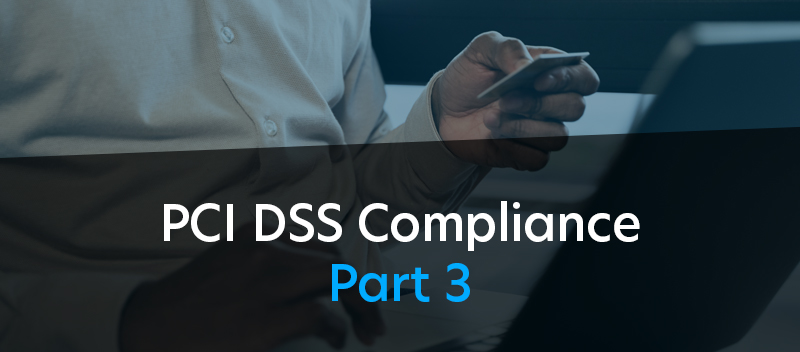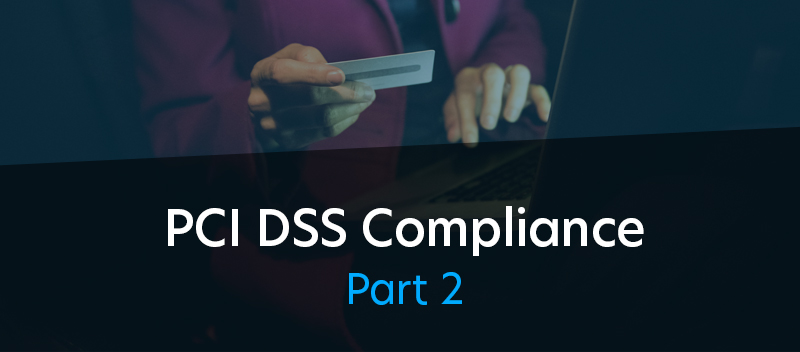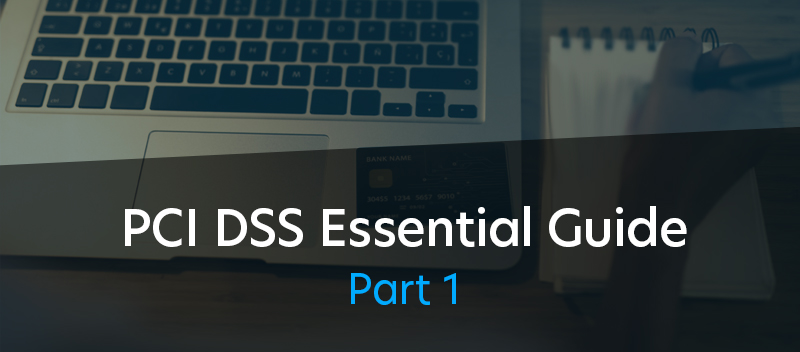Blog Predicting the Future: TrustNet’s Cybersecurity Predictions for 2024
Predicting the Future: TrustNet’s Cybersecurity Predictions for 2024

As we advance deeper into the digital age, predicting the future of cybersecurity becomes not just a speculative exercise but a necessity. This is precisely what TrustNet aims to do with its Cybersecurity Predictions for 2024.
In this article, we will explore TrustNet’s predictions regarding the critical role of SOC 2 in the cybersecurity landscape. As organizations increasingly rely on cloud services and third-party vendors, SOC 2 compliance becomes an essential benchmark for security and privacy.
Prepare to dive into a future where cybersecurity isn’t just about protection but also about anticipation and strategic planning.
What is SOC 2?
SOC 2, established by the American Institute of Certified Public Accountants (AICPA), is a compliance framework that sets standards for managing customer data. Compliance is evaluated based on five Trust Services Criteria: security, availability, processing integrity, confidentiality, and privacy.
Achieving SOC 2 compliance signifies that a company has robust data protection measures in place and adheres to them consistently and effectively. It’s not just about ticking boxes; it’s about setting up and maintaining stringent data protection standards that foster confidence with customers and stakeholders.
Initially, SOC 2 audits focused primarily on physical and technical controls. However, with the rise of cloud services and third-party vendors, it became apparent that more comprehensive oversight and robust data management controls were needed.
This shift led to the evolution of SOC 2 into a more encompassing framework. It no longer focuses solely on security but also considers a system’s availability, processing integrity, confidentiality, and privacy. This holistic approach makes SOC 2 an indispensable asset for businesses in today’s digital landscape.
For more on our SOC 2 compliance services Click Here
The Five Trust Service Principles of SOC 2
SOC 2 Compliance is structured on five core “trust service principles,” namely security, availability, processing integrity, confidentiality, and privacy.
Security. Information and systems are protected against unauthorized access, unauthorized disclosure of information, and damage to systems that could compromise the availability, integrity, confidentiality, and privacy of information or systems and affect the entity’s ability to achieve its objectives.
Security refers to the protection of
- information during its collection or creation, use, processing, transmission, and storage, and
- systems that use electronic information to process, transmit, transfer, and store information to enable the entity to meet its objectives. Controls over security prevent or detect the breakdown and circumvention of segregation of duties, system failure, incorrect processing, theft or other unauthorized removal of information or system resources, misuse of software, and improper access to or use of, alteration, destruction, or disclosure of information.
Availability. Information and systems are available for operation and use to meet the entity’s objectives.
Processing Integrity. System processing is complete, valid, accurate, timely, and authorized to meet the entity’s objectives.
Confidentiality. Information designated as confidential is protected to meet the entity’s objectives. Confidentiality addresses the entity’s ability to protect information designated as confidential from its collection or creation through its final disposition and removal from the entity’s control in accordance with management’s objectives.
Privacy. Personal information is collected, used, retained, disclosed, and disposed of to meet the entity’s objectives.
How SOC 2 Enhances Cybersecurity
SOC 2 compliance is pivotal in enhancing a company’s cybersecurity posture. Here’s how:
Robust Security Measures: SOC 2 requires companies to implement stringent security controls, which include network and web application firewalls, two-factor authentication, intrusion detection, and regular vulnerability assessments. These measures significantly bolster the company’s defense against cyber threats.
Enhanced Data Protection: Complying with SOC 2 requires comprehensive data management controls. This includes encryption of sensitive data, secure data transmission, and robust access control mechanisms. It ensures that customer data is well-protected at all times.
Increased Trust and Confidence: Achieving SOC 2 compliance demonstrates to customers and stakeholders that the company takes data protection seriously. This can increase trust, enhance reputation, and potentially increase business opportunities.
Continuous Monitoring and Improvement: SOC 2 isn’t a one-time certification but a framework for continuously monitoring and improving security controls. Regular audits ensure that companies stay vigilant and proactive in their cybersecurity efforts.
Integrating SOC 2 into your cybersecurity strategy provides a structured and comprehensive approach to data security. It helps businesses stay ahead of the curve by evolving their defenses in line with emerging threats and technological advancements.
In the long run, SOC 2 compliance strengthens cybersecurity and fosters a culture of security within the organization, ensuring that data protection is everyone’s responsibility.
Real-world Examples of SOC 2 Compliance Impact on Cybersecurity
SOC 2 compliance plays a vital role across various sectors, particularly those that handle sensitive data. Here are some real-world examples showcasing the positive impact of SOC 2 compliance on a company’s cybersecurity measures:
Information Technology (IT): In the IT sector, companies such as software service providers and data centers must demonstrate SOC 2 compliance to assure clients that their data is handled securely. Achieving SOC 2 certification boosts client trust and gives the business a competitive edge in the market.
Finance: Financial institutions like banks and fintech companies are entrusted with sensitive customer data, including financial transactions and personal identification information. SOC 2 compliance is crucial for such institutions to assure customers that their financial data is securely processed and stored.
Healthcare: Healthcare organizations handle vulnerable patient data, making SOC 2 compliance critical. Compliance ensures that patient data is protected and confidentiality is maintained. This is essential for healthcare providers to operate and maintain patients’ trust.
E-commerce: E-commerce companies manage a significant volume of client data, encompassing transaction details and personal information. Adherence to SOC 2 standards guarantees secure storage and handling of this customer data, critical in fostering customer confidence and facilitating seamless business procedures.
Education: Educational institutions and EdTech companies deal with sensitive student data. SOC 2 certification demonstrates to schools and universities that student data is handled with integrity and confidentiality. This is crucial for maintaining institutional partnerships and securing the trust of students.
By integrating SOC 2 into their cybersecurity strategy, businesses from different sectors can assure their stakeholders of their commitment to security, thus enhancing reputation and customer trust.

Steps to Implement SOC 2 Framework in Your Business
Implementing a SOC 2 framework in your business involves a structured, multi-phase process. Let’s break down the primary stages:
Phase 1 – Readiness Assessment (3 to 6 Weeks): This initial stage involves onsite and offsite evaluations. The aim is to assess the current state of your organization’s systems and controls. This readiness assessment allows the identification of potential gaps or weaknesses in areas such as documentation of policies and procedures, system configuration, audit trails, and usage of technical resources. This phase serves as a diagnostic tool to prepare your organization for the later stages of the audit.
Phase 2 – Remediation (2 to 8 Weeks): This phase addresses the identified issues following the initial assessment. This is the time to execute the necessary changes to rectify the discrepancies in the readiness assessment. These modifications can involve using various technical resources, implementing new or revised procedures, creating or updating documentation of policies and procedures, altering system configurations, and ensuring the retention of audit trails by preserving evidentiary elements. This stage is crucial as it prepares the client for the final evaluation.
Phase 3 – Assessment and Reporting: Type 1: (4 to 6 Weeks) Type 2: (7 months): This final stage requires an onsite evaluation to demonstrate the rectifications’ effectiveness during the remediation phase. This includes a primary and secondary round of testing to ensure that the implemented changes have effectively addressed the previously identified gaps. The results of these tests are then documented in a detailed report. This report will determine whether the organization has successfully met the criteria for SOC 2 certification.
Tips for a Smooth Integration of SOC 2 into Existing Cybersecurity Measures
Here are some practical tips to ensure a smooth integration:
Determine Your Business Goals: Understand what you want to achieve with SOC 2 compliance. This could range from increasing customer trust to meeting regulatory requirements.
Identify Essential Systems: Not all systems will fall under the purview of SOC 2. Identify those that handle sensitive data or are critical to your operations.
Conduct a Risk Analysis: Evaluate your cybersecurity measures and identify potential risks. This will help you understand where improvements are needed.
Choose the Appropriate SOC 2 Report Type: Depending on your business needs and the level of assurance you want to provide to your stakeholders, choose between a Type 1 or Type 2 report.
Select a Partner with a Security Compliance Platform: One effective way to streamline your security processes and make achieving SOC 2 compliance easier is by partnering with experts and leveraging a security compliance platform. A notable example is TrustNet, a leading provider of cybersecurity and compliance services.
Overcoming Challenges in SOC 2 Implementation
Implementing SOC 2 can present several challenges due to its complexity and the need for ongoing compliance. However, these difficulties can be successfully navigated with the right strategies.
Understanding the Scope: The SOC 2 framework is extensive and intricate, making it challenging for organizations to comprehend its requirements fully. One effective strategy to overcome this challenge is to hire a qualified expert like TrustNet, who specializes in SOC 2 compliance.
Resource Constraints: Many organizations face limitations in terms of personnel and time, which can make achieving SOC 2 compliance difficult3. Prioritizing tasks based on their importance and allocating resources strategically can help manage this challenge.
Maintaining Continuous Compliance: Achieving SOC 2 certification is not a one-time event; it requires ongoing compliance. Implementing a continuous monitoring program and conducting regular internal audits can help maintain compliance over time.
Data Management: Ensuring all data is secure and managed correctly can pose a significant challenge. Implementing robust data management policies and procedures, including encryption and access controls, can help address this issue and enhance data security.
Change Management: The rapidly evolving nature of technology and business processes can make maintaining SOC 2 compliance difficult. Establishing a robust change management process that includes regular reviews and updates to policies and procedures can help mitigate this challenge and ensure your organization remains compliant.
By understanding these potential challenges and implementing appropriate strategies, organizations can effectively achieve and maintain SOC 2 compliance.

How TrustNetInc Can Assist in Implementing SOC 2 Framework
TrustNetInc. is a leading provider of cybersecurity and compliance services, including assistance with SOC 2 implementation. Our extensive knowledge and experience across various certification frameworks make us a trusted partner in achieving and maintaining SOC 2 compliance.
Clients who have partnered with us have consistently expressed their satisfaction with our services. Here are some testimonials:
Chris Hagenbuch, Principal – Canda Solutions: “TrustNet’s extensive knowledge and experience navigating between various certification frameworks allowed us to fast-track the audit process, leading us to complete the certification with confidence.”
Andy Wanicka, President – Certified Medical Consultants: “TrustNet has streamlined the Compliance process for my company. With weekly project status updates and reports, I am assured that my staff is up to date on all document submissions.”
Chris Porter, Director, IT and Security – Cervey: “TrustNet performs our annual SOC 2 Type 2 audit. The audit team is professional, highly experienced, and very easy to work with, making the audit process very streamlined.”
These testimonials highlight TrustNet’s professionalism, expertise, and dedication to ensuring our clients’ successful journey toward SOC 2 compliance.
Securing Your Future: The Importance of SOC 2 Compliance
Ultimately, achieving SOC 2 compliance is an essential step in fortifying your organization’s cybersecurity. It helps create a more robust and secure environment, protecting sensitive data and strengthening trust with customers and partners.
If you’re ready to take the next step in strengthening your cybersecurity strategy, we invite you to book a Strategy Session with TrustNet Inc. Our team of experts will guide you through the process, helping you navigate the complexities of SOC 2 implementation and ensure ongoing compliance.
Remember, cybersecurity isn’t just about protecting your business—it’s about securing your future. Take that crucial next step with TrustNet today.
Ready to strengthen your cybersecurity strategy? Book a Strategy Session now.




